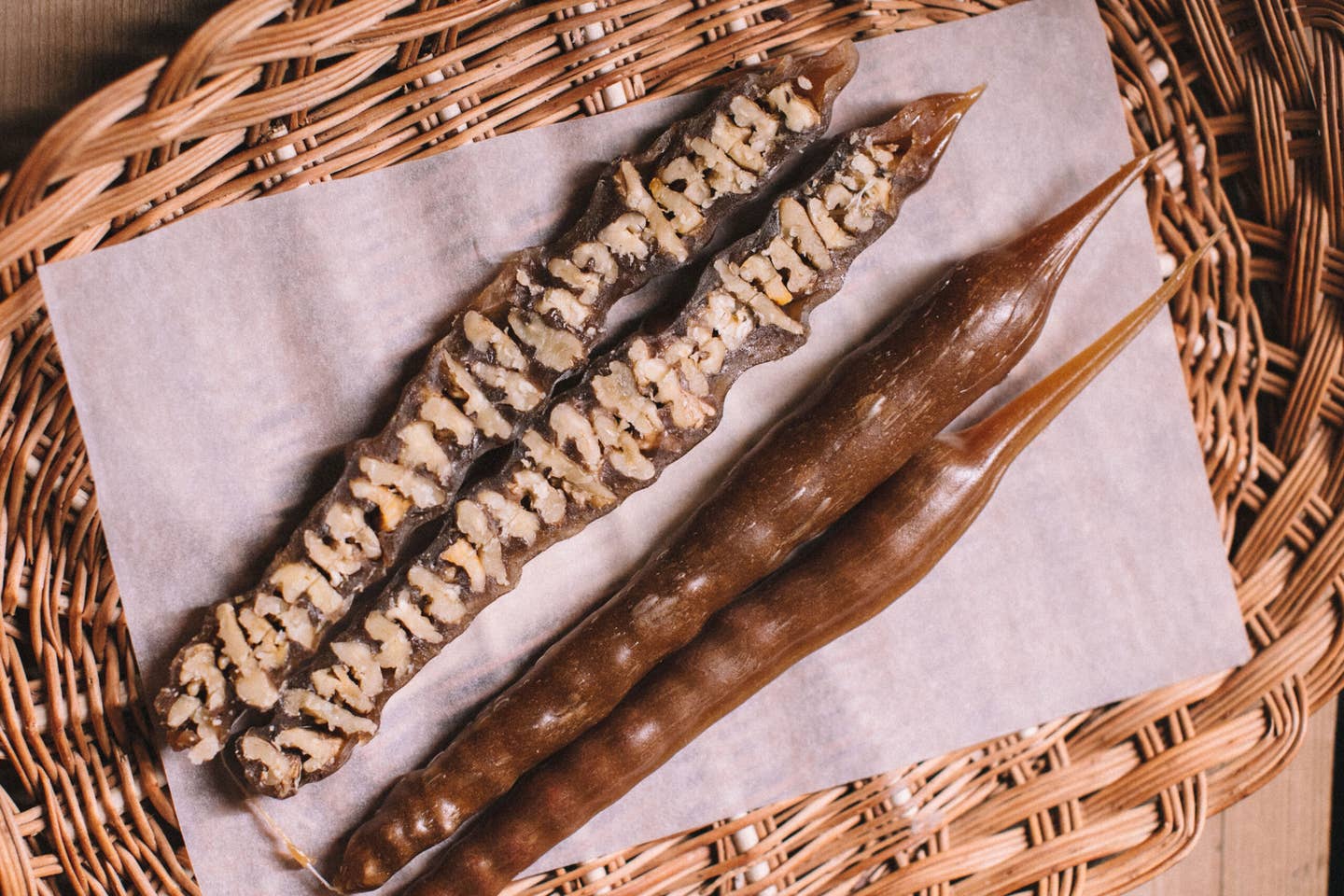
Until I started spending time in Georgia, walnuts were an afterthought in my kitchen. Occasionally I’d toss them into brownie batter and sprinkle them over salads, but truth be told, they usually wound up in the trash, rancid and mealy from months of neglect. What a waste: As I’d learn in the Caucasus, walnuts are far more than a snack or a garnish. They can be the backbone of a dish, blitzed with vegetables into savory spreads, pounded with garlic into heady sauces for meat, or whisked into stews for richness and heft. In other words, your favorite new magic-bullet ingredient might already be in your cupboard.
Many cultures cook with walnuts—see walnut-thickened fesenjan from Iran, or pickled walnuts from Britain—but in Georgia the ingredient is elemental. From the Azerbaijan border in the east to the Black Sea in the west, walnuts are in everything from soup to—well, you get it, imbuing stews, salads, sauces, and desserts with a woodsy richness that’s a hallmark of Georgian cooking. The more walnutty foods I tried in the region, the more I wondered what these walnut whisperers knew that the rest of us didn’t, and how Georgia became such a walnut-loving nation in the first place.
My fieldwork began in the one-church village of Akura at the foot of the Caucasus Mountains. I was at a backyard feast at the home of Tekuna Gachechiladze, whose Tbilisi restaurant Café Littera breezes through 15 pounds of walnuts in a slow week. “So, you want to know about walnuts?” Gachechiladze asked, chuckling. “Go grab a bottle of wine. We’re going to be here for a while.”
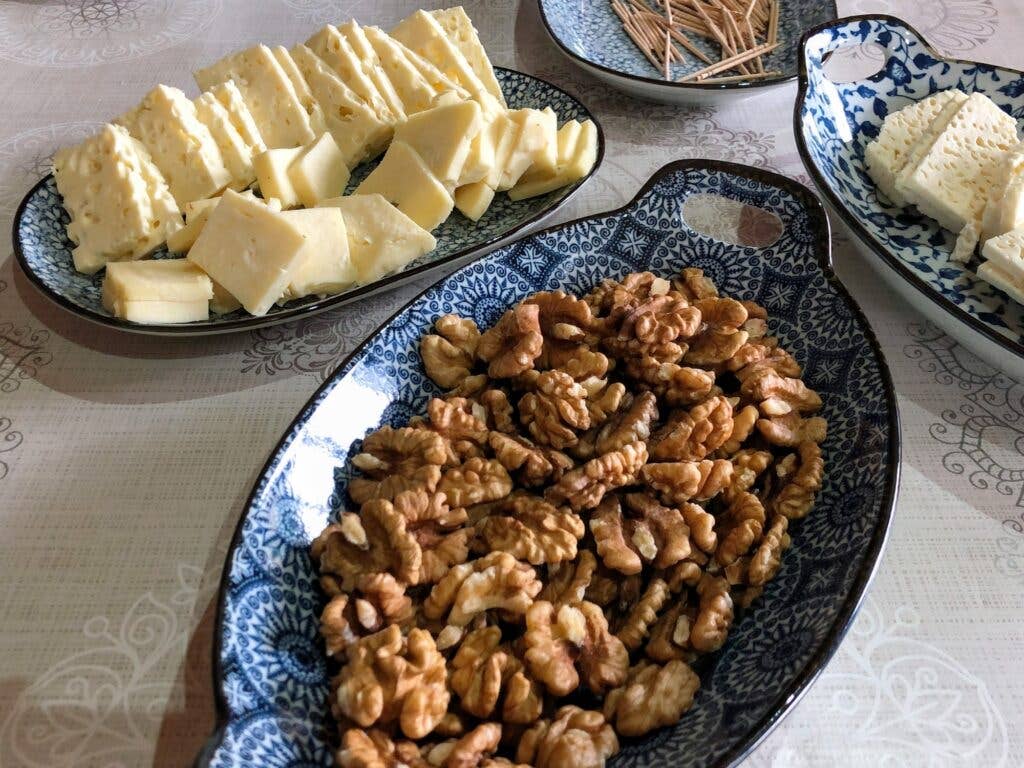
Walnuts have been growing alongside humans since neanderthals were our neighbors. Fossil records show that they’ve existed in the Caucasus for millennia, ample time for Georgians to develop their own mythology, traditions, and—of course—foods based on the nut. According to culinary historian Dali Tsatava, walnuts are the oldest-known cultivated food in the Caucasus region. “Walnut trees were always sacred, considered a symbol of abundance,” she explained. “The nuts were offered as a sacrifice at churches, which were often surrounded by walnut trees, and almost every Georgian family had a walnut tree at the gate.”
The spiritual connection to walnuts has been all but forgotten, but the trees and their bounty remain. Between sips of rkatsiteli, Gachechiladze explained that walnut cookery in Georgia comes down to three components: the walnuts themselves, garlic, and khmeli suneli—a spice blend that usually contains coriander, chile, dried marigold petals, and an extra-floral strain of local fenugreek (Trigonella caerulea)—all forced through a meat grinder or pounded in a mortar to obtain a thick paste. “Dilute this mixture with water, and you have bazhe sauce. Stir it into meat stew, and you’ve got kharcho. Work it into cooked vegetables or greens, and you have pkhali. And on and on,” she said.
Gachechiladze is persnickety about her pkhali, which at Littera comes in four colorful varieties: beet, eggplant, spinach, and—my favorite—leek. “You should add enough spices and garlic to flavor the dish, but not so much that they overpower the delicate vegetables and walnuts,” she said. Acid is also crucial as it balances the walnuts’ oily richness—not only in pkhali but in all of Georgia’s savory walnut dishes. Lemon juice, vinegar, and fresh pomegranate juice are all fair game.
But the question remained: What was with the outsize presence of walnuts in Georgian food? Gachechiladze posits that the calorie-rich nuts, high in protein and fat, were historically the most nutritious stand-in for meat, which the peasantry could seldom afford. Further, the whole nation, rich and poor, avoided meat during Lent, which gave rise to an entire canon of vegetarian “fasting” dishes including pkhali and lobio (stewed kidney beans with walnuts and fresh herbs). “I only remember my mother making pkhali when we were fasting,” said Gachechiladze.

Like Gachechiladze, chef Meriko Gubeladze of Tbilisi’s Shavi Lomi and Ninia’s Garden grew up in a walnut-loving family. “As children, we’d pick them when they were still green and rub their white flesh on our lips. It looked like we were wearing lipstick!” she told me over the phone. Walnuts contain a chemical called juglone that, when exposed to air, becomes a brownish black pigment.
While the kids dabbled in makeup routines, the grown-ups would be in the kitchen turning the season’s first walnuts into a chthonic spoon-sweet called muraba. This jet-black conserve is so tedious to make that you’re likely to—as the Georgian saying goes—“break a walnut shell between your butt cheeks”: First you have to remove the nuts’ ornery skin (turning your fingers brown in the process), then soak the peeled nuts in multiple changes of water mixed with alum (for color) and lime (for crispness), and finally candy them in sugar syrup and can them for long-term preservation. Georgians serve the resulting orbs with breakfast and tea; me, I like them paired with stinky cheeses and spooned over chocolate ice cream.
In autumn, when walnuts’ tender green skins ossify into brown, brainy exoskeletons, they’re harvested and sent to market. Even at corner groceries, Georgians have the luxury of choosing from several bins of walnuts segregated by size and color. Broken brownish nubs, the most affordable option, are snapped up for soups and pkhali for which color is unimportant, while the prized whiter intact walnut halves lend gozinaki (walnut brittle) its attractive cragginess and sauces like bazhe their requisite ivory hue.
“Anyone can whip up bazhe in five minutes,” said Gubeladze, and she’s right, provided you have walnuts and a few key spices (coriander, fenugreek, and marigold) on hand. Roast chicken with tomato-cucumber salad and a passed bowl of bazhe is Georgian weeknight fare at its finest: gutsy, simple, fresh. Gubeladze’s recipe, my go-to, is lighter and tangier than most, thanks to the double whammy of acid in the form of white wine vinegar and pomegranate juice. It plays as well with sheet-pan veggies as it does with grilled meats and even fish.
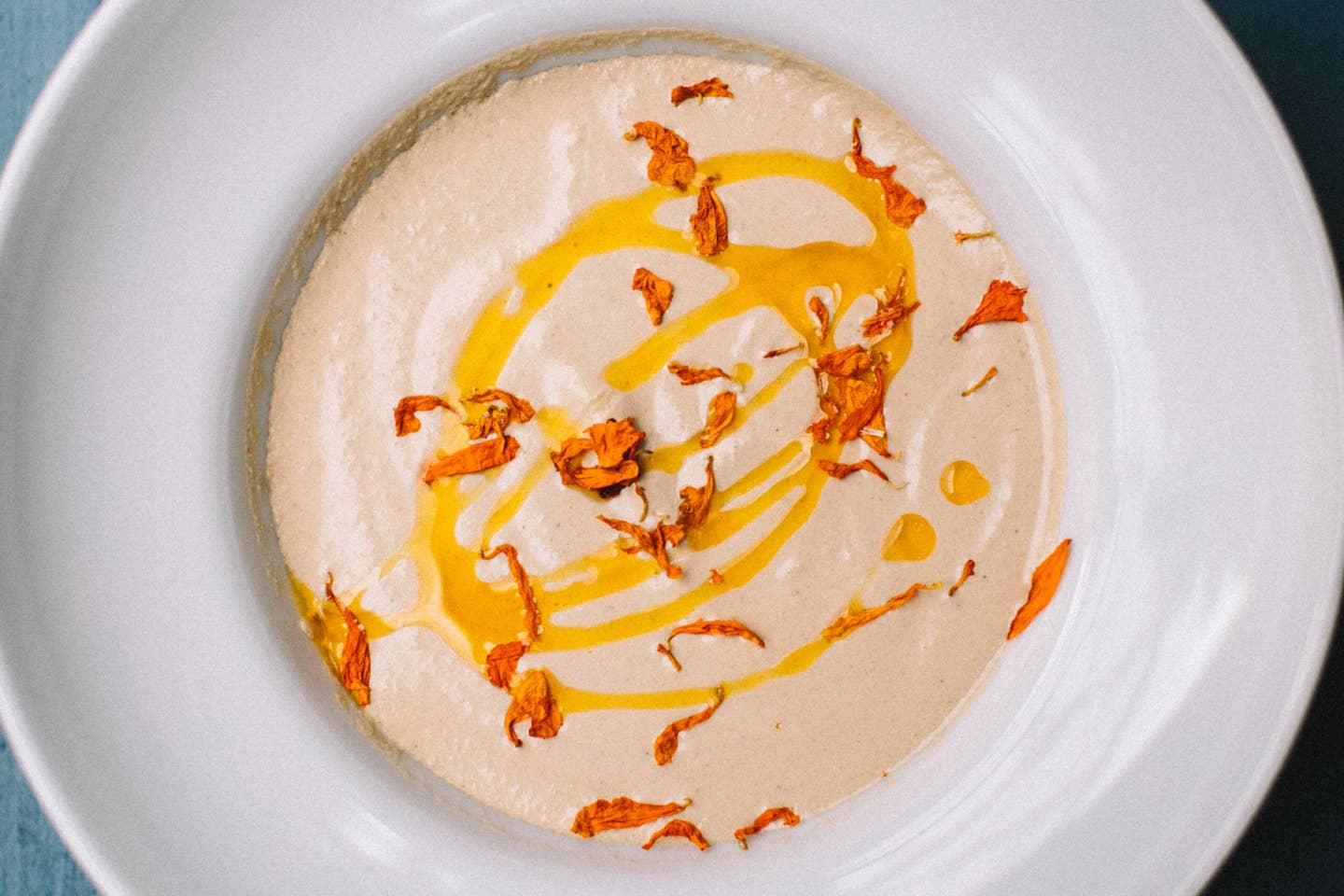
But for newcomers to Georgian cuisine, the biggest revelation may be what walnuts do for stews. Georgians employ garlicky walnut paste like the French use cream, adding it in the final minutes of cooking for richness, texture, and depth. Walnut-thickened stews are so prized by Georgians that the country rings in each New Year with satsivi, a slow-simmered cauldron of turkey braised with garlic, cinnamon, and allspice and anointed with drops of orange-hued walnut oil. (Food scholar Darra Goldstein, author of The Georgian Feast, makes the case that satsivi descends from north Indian curries, but that’s a tale for another time.)
Bolder and spicier than satsivi is kharcho, a west Georgian meat stew brimming with ajika and walnuts. It’s such a crowd-pleaser that it was adopted by cooks across the former Soviet Union, where it remains a staple from St. Petersburg to Samarkand. Indeed, one of my favorite bites on earth is the beef kharcho at Tbilisi restaurant Salobie Bia, where chef Giorgi Iosava ladles it over creamed foxtail millet akin to polenta. The spoon-tender brisket and silky porridge are so delightfully soft that the combo ought to be prescribed after wisdom teeth surgery.
Back in Akura, Gachechiladze was using kharcho as a verb—“If you haven’t kharcho’ed shrimp, you haven’t lived!” My stomach audibly groaned as we stood and walked over to the overflowing supra table. There, beneath the boughs of a gnarled, old tree, we toasted to friends, to ancestors, and—naturally—to Georgia. When I looked over at Gachechiladze, she was pointing up at the foliage with one hand and down at the table with the other, her eyes glinting: “Any guesses?” she said.
Recipes
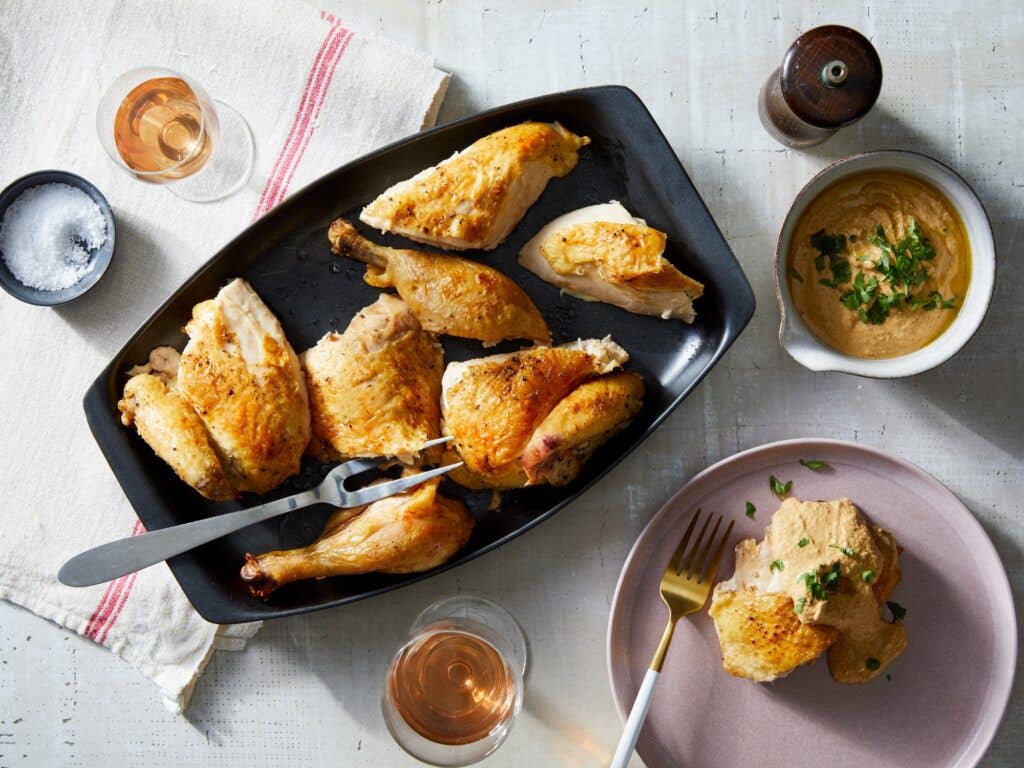
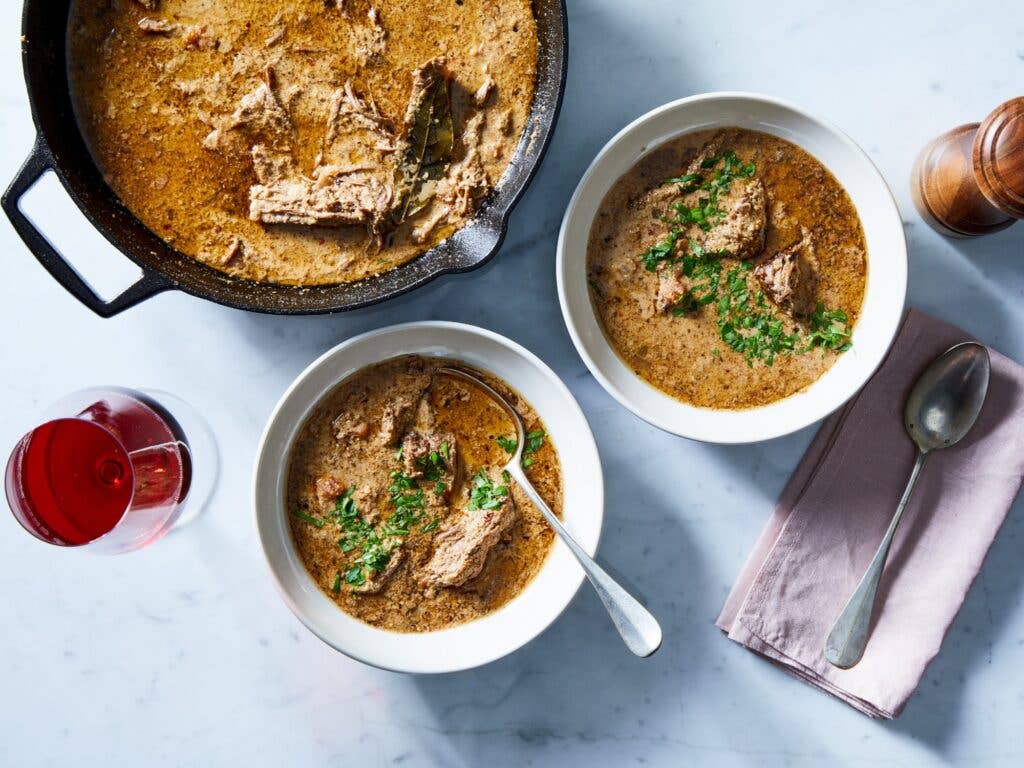
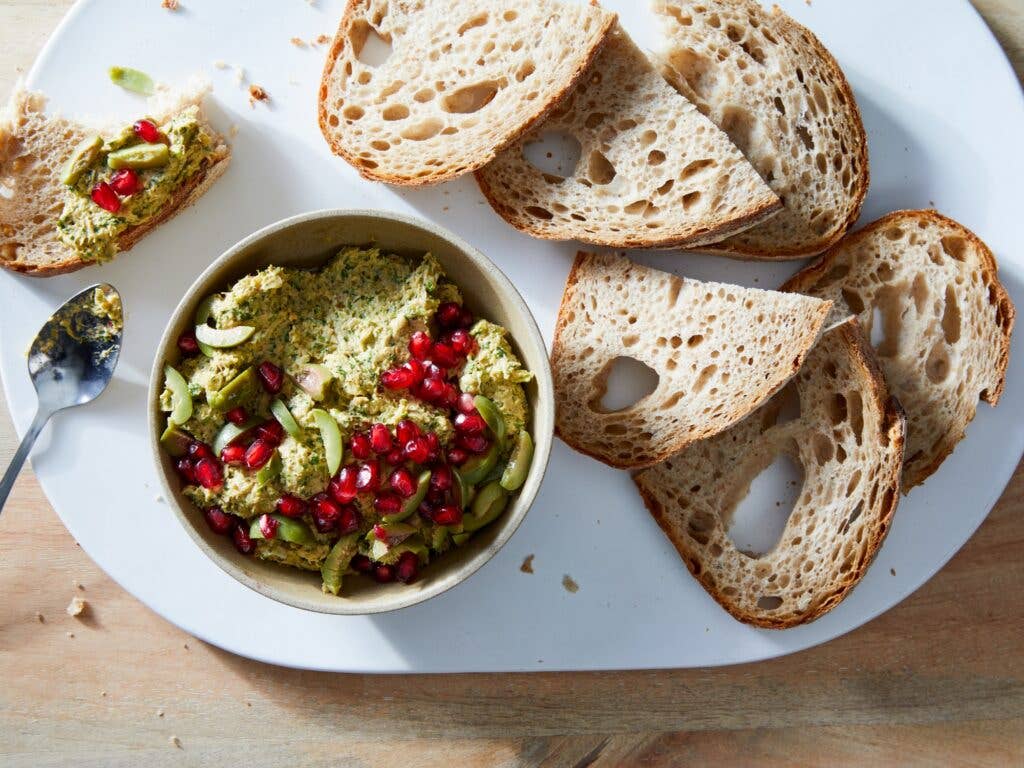
Keep Reading
Continue to Next Story










